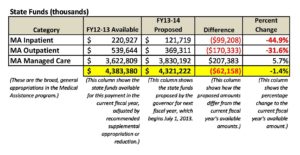The Proposed FY 2014 State Budget: Part 3 of 7
Hospital Assessment Revenue
Last Tuesday, Pennsylvania Governor Tom Corbett unveiled his proposed state FY 2014 budget. Later that day, members of the Safety-Net Association of Pennsylvania (SNAP) received a comprehensive memo outlining the governor’s budget proposal with an emphasis on the issues that matter most to the state’s 61 private safety-net hospitals.
Over a seven-day period, SNAP presents in this space the highlights of the governor’s budget, again with an emphasis on Medical Assistance and other matters of special interest to Pennsylvania’s safety-net hospitals. Today, SNAP takes a look at what the proposed budget says about revenue from the state-wide and Philadelphia hospital assessments.
The proposed budget assumes $633 million in revenue from the state-wide hospital assessment and another $148 million from the Philadelphia hospital assessment. While the revenue anticipated from the Philadelphia assessment appears to be in line with prior years’ collections, the revenue associated with the state-wide assessment appear to be greater than in the past. It is unclear whether this apparent increase reflects the state’s intention either to increase its share of assessment revenue or to raise the assessment rate.
Tomorrow: Medical Assistance Supplemental Payments


